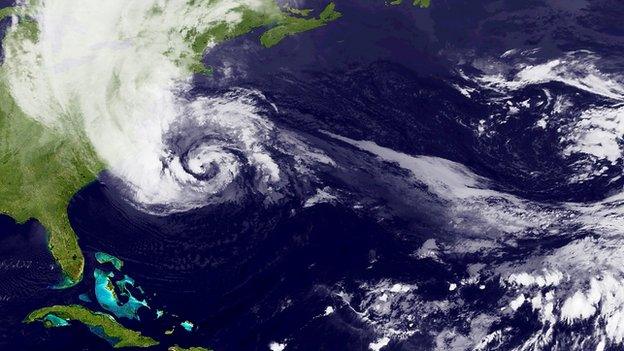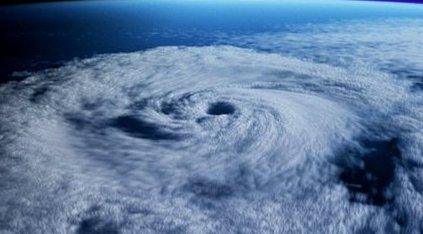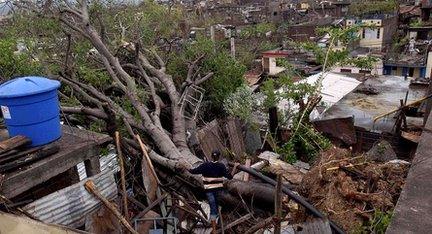Guide: What is a super-storm?
- Published

It has caused devastation across the Caribbean and along America's east cost. But a variety of other weather factors have turned Hurricane Sandy into a super-storm, or as some experts are calling it a "Franken-storm." Here's Newsround's guide to what that means.
BBC weatherman Simon King explains Hurricane Sandy
What makes Sandy a super-storm?
Sandy is so big that winds could be felt up to 450 miles away from the storm's centre.
On top of this the warm, moist air that Sandy's dragged from the south is expected to collide with cold and wintry weather from the north and west. It will then officially become a powerful super-storm and those conditions could drag it further in-land and across more parts of America.
A full moon also means the sea tides will be higher than usual, making it easier for the storm's powerful winds to push water onto the land and potentially causing mass flooding.
A hurricane is a very big storm. It can be up to 600 miles (966 km) wide with strong winds spiralling inward and upward.
Each hurricane usually lasts for more than a week, moving 10-20 miles per hour over the open ocean.

How are Hurricanes made?
Hurricanes start when thunderstorms drift over really warm ocean water of 80°F (27°C) or hotter.
Warm water heats the air causing it to rise really quickly.
If there are winds blowing in opposite directions near the ocean surface this sends the air into a spin and starts it moving as a storm.
These storms have a central area of calm known as the "eye", which is the funnel through which the warm air rises.
Hurricanes gather energy as they travel by sucking up heat from warm ocean waters.
Once they reach land the storms no longer have warm water to power them and die out within a few days, but not before winds do a lot of damage.

How do hurricanes get their names?
Tropical storms like hurricanes, cyclones or typhoons last a long time and are given names to help identify them.
There can be 100 storms a year and sailors need to be able to tell them apart.
The first storm of a year will have an A name, like Hurricane Alice or Typhoon Andrew, the next one gets a B name and so on.
Scientists decide if the storm gets a male or a female name.
Names of storms which cause a lot of damage are never used again.
